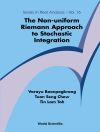This book collects several contributions, written both by statisticians and medical doctors, which focus on the identification of new diagnostic, therapeutic and organizational strategies in order to improve the occurrence of clinical outcomes for Acute Coronary Syndromes (ACS) patients. The work is structured in two different parts: the first one is focused on cooperative project mainly on statistical analysis of large clinical and administrative databases; the second one faces the development of innovative diagnostic techniques, with specific reference to genetic and proteomic, and the evolution of new imaging techniques for the early identification of patients at major risk of thrombotic, arrhythmic complications and at risk of poor revascularization.
Inhoudsopgave
Part I Organizational Strategies in ACS.- Gender Differences in Hospitalization for Acute Myocardial Infarction in Lombardy During the Years 2000-2010.- Heart Diseases Registries Based on Healthcare Databases.- Designing and Mining a Multicenter Observational Clinical Registry Concerning Patients with Acute Coronary Syndromes.- Statistical Methods to Study the Representativeness of STEMI Archive.- Using Text Mining to Validate Diagnoses of Acute Myocardial Infarction.- Part II New Diagnostic and Therapeutic Strategies in ACS.- PREDESTINATION – Primary Ventricular Fibrillation and Sudden Death During a First Myocardial Infarction: Genetic Basis.- micro RNAs and Tissue Response to Acute Ischemia.- The Role of Cardiac Magnetic Resonance in Selecting Patients with Left Ventricular Dysfunction Undergoing Surgical Ventricular Reconstruction.- Chronic Kidney Disease in Acute Myocardial Infarction: Clinical Relevance and Novel Potential Fields of Investigation.












